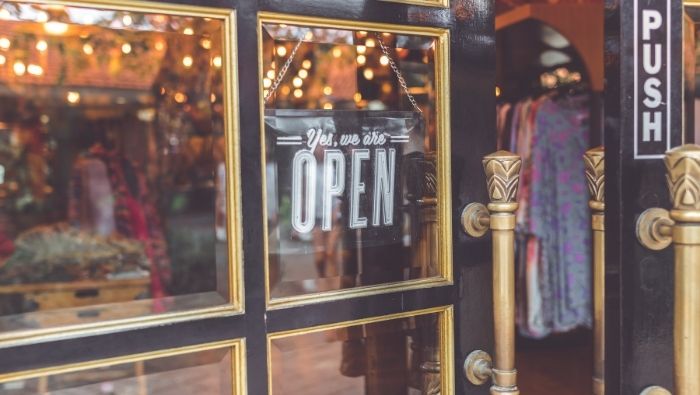9 Secrets to a Successful Consignment Store Sale
by Gary Foreman

Don’t have the time or desire to sell your used goods yourself? Consider selling on consignment and let someone else do the selling for you. See how easy it can be with these simple steps.
Consumers are becoming better shoppers. We expect to get value for the money we spend.
Many have turned to consignment shops to purchase lightly used items at a considerable discount. That means opportunity if you have items to sell.
Consider these steps to a successful consignment store sale.
1. Find a consignment shop that does well with your type of item.
Some shops get a reputation for certain types of items. And, they’ll sell more of those items.
When you visit the shop, whether in person or online, see if the store is stocked with goods similar to your items. Find out how long those things have been offered for sale. If you can find a shop that sells a lot of what you have to offer, you’re more likely to take home a check.
2. Find a shop that displays merchandise well.
Shoppers are turned off if items aren’t neatly displayed, or if online, can’t easily be viewed in detail. If the store doesn’t respect their merchandise, it can’t be worth much.
Quality goods deserve quality display. Find a consignment shop that understands how to present products for sale.
Start living better for less.
Subscribe to get money-saving content by email that can help you stretch your dollars further.
Twice each week you'll receive articles and tips that can help you free up and keep more of your hard-earned money, even on the tightest of budgets.
Subscribers receive a free copy of our eBook Little Luxuries: 130 Ways to Live Better for Less.
We respect your privacy. Unsubscribe at any time.
3. Avoid new consignment shops.
You’ll have more success with a shop that’s been in business for a year or more. They will have built up a reputation and a clientele.
A new shop owner is still learning how to run the business. They’re not sure what will sell. And, they’re likely to price some items too high and some too low. A shop that’s survived for a number of years demonstrates that the owner knows how to sell items at a profit.
4. Get to know the store personnel.
People working at consignment stores are just like the rest of us. They tend to go a little further for people they like.
If you are working with a brick and mortar consignment shop, take the time and effort to get to know the owner and employees. In effect, you’re really getting to know your sales force.
5. Know the deal.
Most brick and mortar consignment shops are owner operated. You’ll likely strike up a conversation with them.
No matter how nice they are, don’t rely on a verbal agreement. Get it in writing. Shops have different policies on setting prices, lowering prices, fees, and revenue splits. An experienced shop will have an agreement they can print out and give to you.
If you are selling through an online consignment shop, make sure you read all of their policies before listing anything for sale and contact them with any questions you have. Many online consignment sites have policies that brick and mortar stores don’t have to deal with, such as who pays for shipping any unsold items back to you or items they decide not to accept on consignment after they have been shipped to the store for initial inspection.
6. Know how much your items are worth.
Before you consign, see how similar items are priced in the shop. Then do the math to see how much the seller’s share would be.
Your goods will be priced like other similar items. If your share isn’t enough to make you happy, don’t consign the item.
7. Have the right items to sell.
High quality clothing usually does well. Furniture, especially retro items, sells. Home accessories and contemporary lamps are also popular.
Things that don’t sell well include figurines, rugs, chinaware, and TV entertainment centers.
8. Prepare your items for sale.
Make them look as close to new as possible. Make any repairs. Remove stains. Launder or clean as necessary.
You want buyers to think of your items as if they were new and compare your price accordingly. Shoddy goods will be compared to comparable thrift store prices, which is not how you want your stuff to be seen.
9. Know when consignment is not your best choice.
Some items, like collectibles, which require a special kind of buyer, do better online where collectors congregate. Other lower-priced items could do better on Craigslist where you don’t need to split the money you receive.
Or, on the other side of the spectrum, more expensive items, like jewelry, will do better in a store dedicated to that product.
Reviewed July 2021
About the Author
Gary Foreman is the founder and former editor of The Dollar Stretcher. He has been featured in MSN Money, Yahoo Finance, Fox Business, The Nightly Business Report, US News Money, Credit.com and CreditCards.com.
Subscribe to The Dollar Stretcher, our free twice-weekly newsletter aimed at helping you live better for less on the money you already have!
Subscribers get a copy of our ebook Little Luxuries: 130 Ways to Live Better...For Less for FREE!
Popular Articles
On After50Finances.com
- 9 Things You Need to Do Before You Retire
- You Didn’t Save Enough for Retirement and You’re 55+
- When Empty Nesters Reorganize and Declutter Their Home
- Reinventing Your Career in Your 50s or 60s
- What Mature Homeowners Should Know about Reverse Mortgages
- 2 Reasons to Collect Social Security Benefits As Soon As Possible



